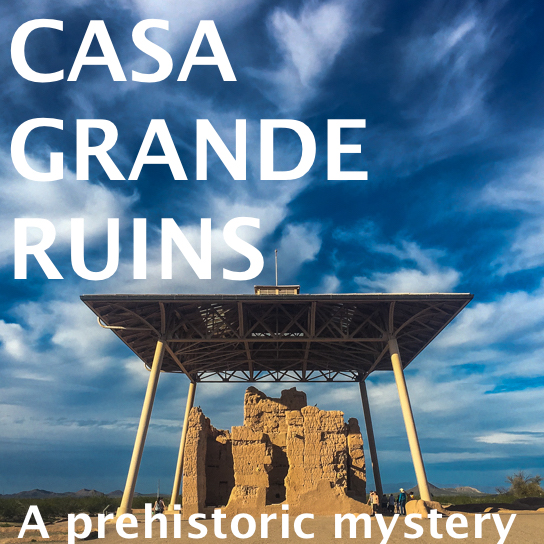Spoiler alert: Nobody knows.
Imagine you're traveling through the Sonoran Desert 600 years ago. On the horizon, towering above the cacti is a four-story building. It dwarfs the other buildings around it. It's the biggest building you've ever seen.
As you get closer you see canals and fields of crops. Maybe it's a place for trading and food storage.
Nearing the building you find a wall around the compound. Maybe there's a threat and this building is a sanctuary.
Inside, the windows line up with astronomical events including the days the sun stands still (the winter and summer solstice) and when the moon stands still (only once every 18.6 years). Maybe the entire structure is a calendar.
But there's nobody there. The place is deserted. To build it must have taken a massive effort of resource collection and coordination, but just 100 years after it was built it's no longer being used.
Why?
Remember the spoiler alert? Nobody knows.
The people that built this amazing place, the ancestors of the O'Odham, Hopi, and Zuni, left no written records. The evidence that's been unearthed since study began in 1883 (first as the nation's first prehistoric and cultural reserve and as a National Monument in 1918) has shown that the Hohokam culture traded, built irrigation canals from hundreds of miles away, and understood the solar and lunar cycles.
It doesn't take long to go through the museum or walk around the ruins, but if you work on your Junior Ranger badge (one of the few that require a physical site visit) and you take a guided tour you can spend the entire day there.
Sivan Vah'Ki, "The Great House," was not built on a whim or without purpose. The inhabitants of the Sonoran Desert succeeded in building a structure bigger than anything else in North America. We just need to figure out why.
